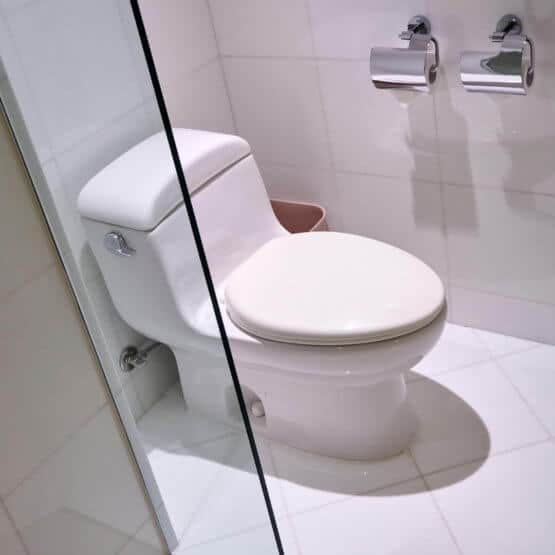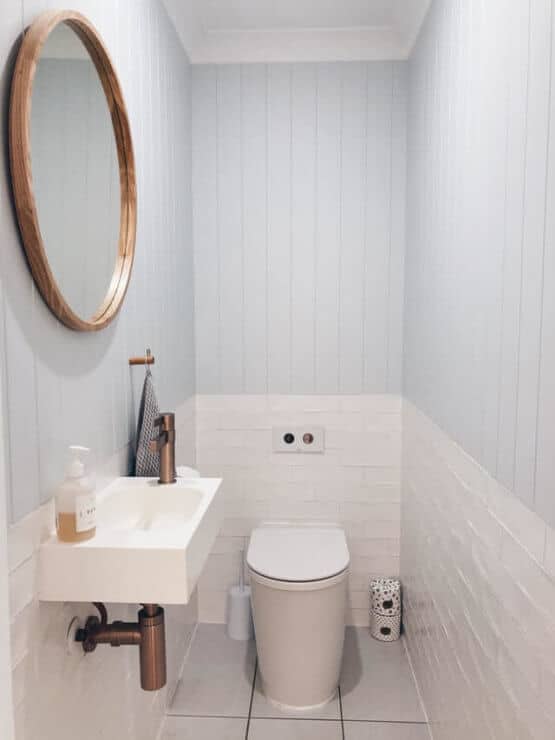Toilets are supposed to have a flush cycle. You’ll push the button, the water will run for a few seconds, then it will stop and the tank will refill. However, sometimes your toilet won’t stop running. This might force you to stand next to it, staring blankly and wondering what went wrong. Jiggling the flush valve won’t really do much, so don’t even try it!
Fortunately, there is no need to immediately call the plumber for help. There are some quick fixes you should try to do first. Of course, the first step would be to identify the problem. Only then you can start thinking about the solution.
If your toilet wont stop running, here’s what you need to do!
What Could Be Wrong If Toilet Wont Stop Running?

Most regular toilets will have three possible causes for when they’re not running:
- The inadequately adjusted float height
- A faulty flapper
- Bad flapper chain
If your toilet won’t stop running and you’re unsure about how to locate the cause, don’t worry. Toilets can have a vast variety of issues that you can fix on your own, such as yellow water in toilet or rusted bolts. Water running from the toilet tank into the bowl continuously is one of them. We’ll explain everything you need to know.
Here are a few common issues behind a toilet that won’t stop running:
1. The Inadequately Adjusted Float Height
In most standard toilets, the water level in the tank is controlled thanks to an adjustable float. However, this float can sometimes get in a faulty position. [1]
For example, if the float height is too low, the flush will be too weak. On the other hand, if it’s too high, your toilet won’t stop running. This is because the water will spill to the overflow tube.
Most tanks have a level mark on the back of the tank. Mark it, so you can see it easily. If your tank doesn’t have one, measure around one inch underneath the top of the overflow tube, then mark there.
Next, flush the toilet so you can check out where the water stops and compare that to the mark. If the water goes over it, then you’ve found out why your toilet keeps running.
2. A Faulty Flapper
Almost all types of toilet flush systems have a flapper. As the time goes by, your flapper might become faulty. This is usually because:
- It has gotten dirty
- It became warped
- It got broken
Make sure to thoroughly inspect your flapper so you can rest assured this is what’s causing the issue. Then, depending on the situation, you might need to clean or replace it. Both issues will demand draining the tank first.
3. Flapper Chain
Check out the flapper chain and ensure it’s connected to the rubber flapper and the flush lever the right way. Occasionally, the chain can become disconnected, and this is what’s causing the issue.
If the connection is there, shake the flush lever. If there’s too much or too little slack in the chain, this too can become an issue. If it’s too long, the chain won’t properly open the flapper once you push the lever. On the other hand, if it’s too short, it won’t seal the flapper so the water will continue running. [2]
My Toilet Wont Stop Running – How to Fix It?

Depending on the cause of the problem, it’s time to think about the solution. You shouldn’t let this issue go on for too long, as it can end with extremely high utility bills or even cause mold and mildew damage.
To fix a toilet running intermittently, you’ll need:
- Cutting pliers
- Pliers
- Rubber gloves
- Screwdriver
- Replacement toilet part
Here’s how you can fix this issue:
Step 1
When the overflow tube is causing the problem, you should start by removing the tank lid and finding the fill tube. This is the small flexible tube connecting the toilet overflow tube and a fill valve.
Reattach the fill tube, then push it onto the fill valve. It should perch about an inch above the edge of the overflow tube, so the fill tube could send water into the overflow tube.
If everything’s working properly, then this was the cause of the issue and there’s no need for further steps. If your toilet still won’t stop running, then continue with the next step.
Step 2
The adjustable float is what’s controlling the water level. If the water doesn’t stop at the mark we’ve talked about, you have to adjust the float. In old toilets, you’re required to bend the brass rod connecting to the float ball, as this will help you adjust it.
Newer toilets mostly have a screw or a clip that you can screw or slide. Ensure the float is adjusted at the proper height.
It’s important to note that the water level should always stay at least an inch below the critical level marked on the valve.
If your fill valve won’t shut off no matter what you do, it’s defective. If this is the case, you should turn off the water supply and replace the valve. Keep in mind that for most toilets you don’t have to find the exact same valve as the old one. Many fill valves are made to match all toilet types, so this is one less concern on your hands.
Step 3
If it isn’t the fill valve that’s giving you issues, look at the flapper chain next. If it’s too short or tangled, it won’t let the flapper close, so the water will keep on leaking into the bowl.
The chain should only have a slight bit of slack once the flapper is closed. If it’s too short, you’ll need to readjust it or, in most cases, replace it with a new one. Just make sure you’ve measured everything properly, so that you know what to look for at the hardware store.
If the chain is tangled, detangle it. It might be smart to cut off any excess chain at the rod, so it will be harder for tangles to happen once again. Once you’re done, put the tank lid on once again, and make sure the rod doesn’t hit the lid when the lever is pressed.
If this does happen, readjust the chain once again. Make sure no to cut the chain too much. Going overboard will result in you having to purchase a new one.
Step 4
If you’ve completed everything from the first three steps, but still your toilet won’t stop running, you may have a worn-out flapper. To fix this, you should first turn off the water, then remove the old flapper.
Take it to the hardware store and ask for the exact replacement. Unlike the fill valve, you need to find a match for a flapper. Some have a ring that goes over the tube. Others snap over overflow tube ears. No matter the case, you should look for the exact same type.
Finding the exact match might be a bit tricky. Over the last 15 years, the range of toilet flapper styles has increased significantly, and finding a product that is a perfect fit might be a bit difficult, if not even impossible.
Most hardware stores have at least a dozen of flapper options on their shelves. Some of these items include model and brand information. It might be smart to note yours before you leave your home.
Don’t be too worried if you cannot find the exact one for yourself. Just pick the one that is the closest to yours. They might be a good enough fit to do the job.
On the other hand, some other flappers are universal. These universal ones might not be the best choice for everyone, but they’re affordable, so you might want to take one of those, just in case. If anything else, they won’t hurt your pockets, and you might save yourself from another trip to the store.
Another type of flappers you might find are the ones with the ‘adjustable’ label on them. They’re not the same as universal ones, and we’d advise you to stay clear of them – unless your toilet already has an adjustable one, then go for it.
If your toilet still keeps on running after you’ve replaced the flapper, chances are that the new flapper doesn’t fit. If you have a problem finding the right fit, you might want to replace the entire flapper or overflow tube.
The removal process depends on whether you have a one-piece or a two-piece toilet. If you aren’t sure how to do it, you might want to contact a professional plumber.
The Bottom Line
When your toilet won’t stop running, there’s no need to immediately call a plumber. You can try to fix this issue by yourself. The most important step is to identify the issue, and then you can think of a tactic to solve the problem.
Of course, if you think you cannot do this on your own, it would be wise to contact a professional for help. If you make a mistake, you’re risking increasing the problem, and that’s never a good thing. Still, if you follow the steps we’ve given, you shouldn’t have a problem fixing the issue.

Michael Davis is a heating & plumbing expert who currently works as independent contractor in SC. He also writes for Plumbertip.
For almost 10 years he worked on various plumbing tasks across South Carolina.


